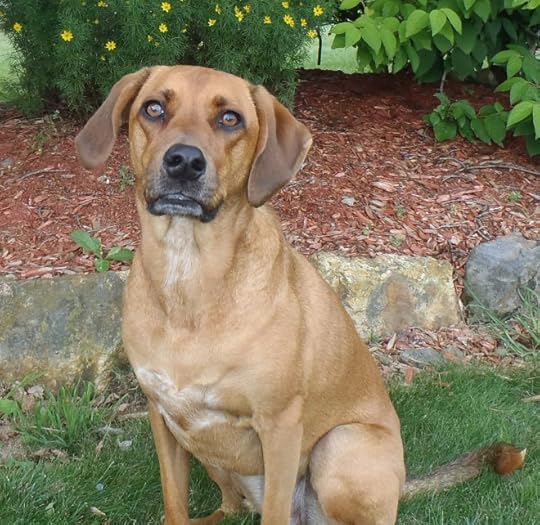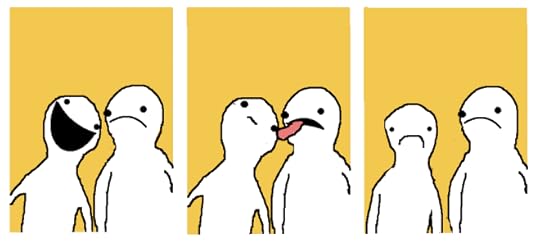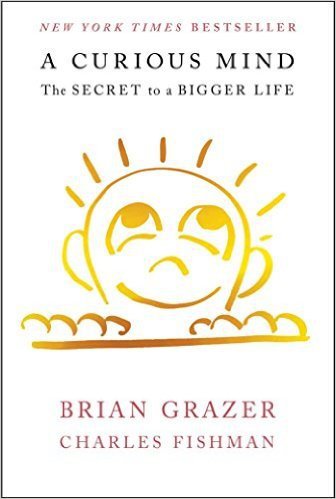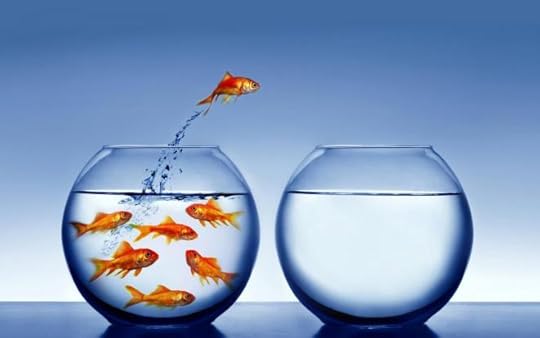Reyna Favis's Blog, page 10
June 30, 2016
My Plott Hound is an Introvert

There have been many famous and talented writers who had special pets in their lives.
Mark Twain owned a “large and intensely black” cat named Bambino who went missing from his household when he lived in New York. This author offered a $5 reward for the return of his beloved pet. While the entire world lined up at his door with an assortment of cats just to meet the great Mr. Clemens, Bambino eventually returned of his own accord and saved his owner the reward money. I have two enormous black cats, so logically, I should be twice as amusing a writer as Mr. Clemens.
Elizabeth Barrett Browning’s constant companion was a Cocker Spaniel named Flush. She was one of the most prominent poets of the Victorian era. I have no talent for poetry, but I do own a Cocker Spaniel named George. Based on this connection, I hold out hope that I will one day wake up with a sudden ability to write lyrically.
John Steinbeck had a near-final, handwritten draft of his classic work Of Mice and Men eaten by his dearly loved Irish setter, Toby. Now, that’s what I’m talking about.
In my opinion, every writer needs a Plott Hound. For most people, this is meant in the metaphorical sense – a muse who will inspire a plot that can be shaped into a compelling story. Few writers have literal Plott Hounds, mainly because they can be a handful. These dogs were bred for over 250 years in the hills of North Carolina to hunt bear, boar and other large game. If they’re not afraid of bears, they’re not afraid of you, so you need to be an experienced dog owner if you want to adopt a Plottie.
Jackie Mousseau is the only other writer I know who owns a Plott Hound. She refers to her Plottie, Opha, as her writing buddy. Jackie writes paranormal romance with a co-author.
My Plott mix, Zackie-O, is unlikely to eat my Soul Search manuscript like Toby devoured John Steinbeck’s work, but this is only because I backed it up on a Google drive. Another copy resides on my laptop and I am not being one bit paranoid when I tell you that I fear for the safety of my electronic devices. When Zackie-O was a little younger, she stole my earpiece and left little bits of plastic and circuit board under a bed. Not too long after that, I had to replace my cell phone because two large bites in the case killed my ability to receive calls. The phone could call out just fine, but it would only produce a skirling noise when a call came in and nothing I did would allow the call to be picked up. I can only surmise that Zackie-O, after an initial dissection, developed an almost surgical skill when it came to disabling my electronics. A laptop is pretty big and you would think that it ought to be safe from a marauding Plott Hound, but that’s probably what the bears thought right before they got themselves treed.
Given this background information, why would I suggest that my Plott Hound is an introvert? In an unscientific poll on the Facebook group I Love My Plott Hound, half of Plott Hound enthusiasts identified their dogs as context dependent in terms of their behavior. Of the remaining poll takers, almost three times as many identified their hounds as extroverted (would approach a stranger with tail wagging) compared to introverted (wants nothing to do with strangers or just ignores them). If this finding on Plott behavior in a small sample can be extrapolated to the true population, my girl is an outlier. Her stranger behavior has been borne out over many search and rescue public events with meet and greets. Zackie-O has an interest in people’s scents, but after she gets a whiff of them, that’s enough for her. She allows herself to be petted because I ask her to do it, but she’s certainly not seeking out attention. In terms of interactions with other animals, she’s fine with our other pets (although she sometimes gets on George’s last nerve with her high energy and rambunctiousness). If strange dogs challenge her, she is completely unimpressed, even if they are significantly larger than her. I’m pretty sure she’d take on a bear, but I hope to never find out. Like most introverts, Zackie-O is a complex mix.
I live in a neighborhood dominated by golden retrievers, the extroverts of the dog world. Despite the fact that Zackie-O is an active search dog and performs a service for the community AND has a great deal more obedience training than your average family dog, the folks here always give her the hairy eyeball when I walk her. Because she’s a hound, she has a habit of nosing the ground and picking up all sorts of things when we go on a walk. To circumvent this behavior, she frequently carries a stuffed animal in her mouth. While I do not think she can necessarily compete for cuteness with the Staffy in the shower, she does have a charm of her own that goes completely unappreciated in this neighborhood. It is maybe for this reason that I felt compelled to immortalize Zackie-O’s playful and snarky nature in the psychopomp character in Soul Search.
As a practicing introvert, I have learned a great deal from Zackie-O on how to manage social situations that may become intrusive. If you meet me at one of these events and you are a raging extrovert, be careful not to stand too close.

Image credit: Allie Brosh’s Hyperbole and a Half
If you would like to comment on anything in these posts, I would be delighted to hear from you. Please also visit my author’s website at www.reynafavis.com and SoulSearch on Pinterest.
If you would like to subscribe to this blog, click on the three bars at the upper right. The next post will be available on July 31st.


May 31, 2016
The Curious Introvert

Introverts can be voraciously curious. Many of us are scientists, writers and in other professions where curiosity is a prerequisite. When my friend Sara recommended that I read A Curious Mind: The Secret to a Bigger Life, I was intrigued. One major premise of this book is that curiosity is both heretical and disruptive, so by engaging in the brave act of expressing curiosity, the reader automatically becomes a rebel and force to be reckoned with. I found this to be oddly appealing, since I didn’t really have to do anything life-threatening to gain this status. The book is co-authored by Brian Grazer, a famous Hollywood producer of numerous successful films including Apollo 13, Splash, 8 Mile and A Beautiful Mind. The other co-author is Charles Fishman, three-time winner of UCLA’s Gerald Loeb Award, the most prestigious prize in business journalism. Between these two minds, the book content ended up falling somewhere between a business book and a self-help book.
Brian Grazer attributes his success in Hollywood to his habit of conducting “Curiosity Conversations” with luminaries in such diverse fields as science, art, and business. He specifically targeted the CEOs, Nobel laureates and others who had risen to the pinnacle of their fields in order to feed his own creativity by assimilating perspectives that were completely alien to his own. As opposed to an interrogation, the quality of these conversations was openhearted and open-minded exploration, where a question was asked and the answer was given undivided attention. The curiosity conversations are touted as a way to disrupt your point of view in order “to become better leaders, better creators, better managers and better romantic partners.”
I whole-heartedly agree that curiosity will lead a person to a more fulfilling life. Curiosity enriches the life you have by constantly adding to the experience. However, at first blush, Brian Grazer’s approach to promoting and satisfying curiosity is geared to the extroverts in society. To encourage the rest of us, he tries to highlight the less extroverted qualities of his personality in a sort of “see, you can do this too.” Mr. Grazer makes the point that he has a fear of public speaking, does not love big social settings where he might not have a good time, might end up trapped or might not be as entertaining as someone thinks he ought to be. These phobias are all consistent with some versions of introversion, but I wouldn’t issue an Introvert Card to Mr. Grazer just yet. His chosen work life is firmly rooted in the realm of extroverts, where in a typical business day, he conducts about fifty conversations. For introverts, this way lies madness. We’d be worn down to a nub by all this talking. Most of us prefer the company of our non-verbal pets (the topic of a future post) to the endless blather that results from business conversations. Small talk in social settings is equally excruciating.
The facet of Curiosity Conversations that has the greatest appeal to introverts is the potential to eliminate small talk. If small talk or business blather could be converted to an actual, meaningful discussion, introverts might not be predisposed to scan the room for the nearest exits. (N.B. I have seen introverts perform this scan on planes when trapped next to a raging extrovert. How to apply this knowledge in mid-flight, I leave to the Introvert Jedi Masters.) It’s so easy to disengage from conversations when the information content is limited. By declaring a Curiosity Conversation and steering the content to something more information-rich, I hypothesize that an introvert might be less likely to bolt.
I tested this hypothesis in a very small pilot study. To give you some background, I am dipping a toe in the waters of social media and attempting to garner Twitter followers. I never tweet anything particularly erudite or amusing (mostly just announcing updates to this blog or my author website), yet to date, 53 people have decided to follow me for unknown reasons. I returned the favor to one person who was nice enough to follow me and followed him back. He responded with a direct message thanking me for following him and updated me on his new book, which was a compilation of sexual fantasies volunteered by some average New Yorkers. I have in the past eaten stranger things than this for breakfast, so I was not easily put off and decided to engage in a Twitter version of a Curiosity Conversation. I wrote a short message in response and congratulated him on his choice of genre. If I know nothing else about how marketing works in the publishing world, I know that sex sells. (Perhaps you are now reading this blog with slightly more interest than a few moments ago?) I informed him that we were very far apart in what we write. My book (Soul Search; currently with an agent who is deciding whether or not to represent it) has a subplot that traps the protagonist in a situation of unrequited love. I expressed that I was amused by the differences in our choices and left the ball in his court. Disappointingly, I received no further messages. Perhaps if he had responded with an entertaining riposte, I would be inserting a hyperlink on his behalf right here to help him hype his book. Lost opportunity, dude.
If you would like to comment on anything in these posts, I would be delighted to hear from you. Please also visit my author’s website at www.reynafavis.com and SoulSearch on Pinterest.
If you would like to subscribe to this blog, click on the three bars at the upper right. The next post will be available June 30th.


April 29, 2016
Introverts and Exercise (or Pickle Juice, the Elixir of Life)

Introverts have a storied history with exercise. By some accounts, we don’t exercise – this is more an extrovert thing. For introvert writers, writer’s butt has taken off as an affliction in the blogosphere where it is gaining momentum and is almost as prevalent as writer’s block. In the Twitterverse, the hashtag #WritersButt has been assigned to this topic. Contributors to this discussion alternate between chastising themselves (for the unhealthy habit of sitting too long) and congratulating themselves (for their dedicated focus in putting words on a page). Indolent introverts have even become something of a marketing force in the exercise industry. We are encouraged to “feel the burn in a more independent setting than your extroverted friends” and to engage with health and fitness systems designed for the introvert lifestyle.
I own a high drive dog and I am a search and rescue volunteer. Because of these constraints, despite the fact that I spend long hours sitting and writing, I am unable to faithfully fulfill my obligations as an indolent introvert. That and my husband gifted me with wearable technology that displays angry red bars whenever I sit for an extended period of time. The unhappy consequence of certain physical activities (e.g. running full tilt through wilderness in hiking boots during search dog training and going mile upon mile in steep terrain) is severe and unrelenting muscle cramps in my shins and calves when I’m at rest. During an online discussion involving search and rescue workers, the dirty little secret of muscle cramps was openly discussed. I refer to it as a banned topic because no one wants this to reflect on their mission-readiness (but c’mon, even marathon runners get cramps) and it is part of the culture to suck it up and not complain. I was relieved to learn that I was not alone with my physical limitations. One remedy that was suggested by many individuals was drinking pickle juice to relieve the cramps. Because pickle juice was independently brought up by so many people, I needed to know whether these anecdotal reports were merely the result of placebo effect, or if there was any real science behind it.
Dr. Kevin Miller of Central Michigan University has published work on the efficacy of pickle juice as a treatment for skeletal muscle cramps. His research concluded that in comparison to deionized water, pickle juice relieved muscle cramps almost twice as fast in dehydrated humans (84.6 +/- 18.5 for pickle juice vs 133.7 +/- 15.9 s for water). And contrary to the explanation offered online by search and rescue workers, the effect could not be attributed to the pickle juice simply restoring electrolytes to the cramping muscle. Five minutes after consuming pickle juice or water, plasma samples from victims subjects were analyzed to determine electrolyte concentrations. Dr. Miller found that the ingestion of water or pickle juice had little impact on plasma composition. The research team hypothesized that “rapid inhibition of the electrically induced cramps reflects a neurally mediated reflex that originates in the oropharyngeal region and acts to inhibit the firing of alpha motor neurons of the cramping muscle.” In other words, perhaps the acidity of the pickle juice was interacting with receptors in the mouth/throat that talk to the nervous system and convinced it to stop insisting that the muscle must contract. Brilliant research, but this raised at least one more question for me.
If all it takes to get rid of muscle cramps is to drink something of similar pH to pickle juice, then why can’t I just chug a Mr. Pibbs? I would find this to be a much more appetizing alternative to pickle juice. In the spirit of being a pain in the butt (not to be confused with #WritersButt) to academic researchers, I sent an e-mail to Dr. Miller asking him this question. He replied within minutes, providing a copy of the original research article and answering my question. (Dr. Miller is a good egg.) While he has not yet been able to determine exactly why pickle juice seems to relieve muscle cramps, he elaborated that the hypothesis is that the vinegar in the pickle juice causes the activation of TrP (transient receptor potential ion channels) receptors in the mouth, which then cause a reduction in nervous system activity. Dr. Miller suggested that it’s probably not necessary to actually drink the pickle juice, since swishing it around in the mouth and spitting it out should provide the same relief if the hypothesis is correct.
I am not sure that I would have the presence of mind to remember to swish rather than swallow when in the grip of a painful muscle cramp. For anyone out there who is scientifically inclined and suffers from muscle cramps, I’d appreciate it if you could reply to this blog with any experiences. If he does not file a restraining order against me, I’ll be sure to let Dr. Miller know of your findings.
All errors are my own. If you would like to comment on anything in these posts, I would be delighted to hear from you. Please also visit my author’s website at www.reynafavis.com.
If you would like to subscribe to this blog, click on the three bars at the upper right. The next post will be available May 31st.


March 31, 2016
What an Introvert Is and Isn’t

Introverts are humans of striking creativity who traditionally bring big ideas to bay or tree. Frequently described as intelligent, alert and confident, introverts are also noted for stamina, endurance, agility, determination and aggressiveness when pursuing a passion. This surprising characterization might describe some introverts that you already know or, possibly, it might be a slightly bastardized version of the AKC breed description of a Plott Hound. The point is that it is difficult to generalize the true nature of any particular introvert, since introversion is only one characteristic among a multitude that defines a personality. To complicate things further, personality traits also tend to exist on a continuum. In the case of introversion, you might see mention of a thing called an extroverted introvert. To extend the canine metaphor, these are considered to be a breed with mixed emotional ancestry and consequently, have temperaments that can be hard to predict. The recommended course of action upon encountering an extroverted introvert in the wild is to decline eye contact and to slowly back away. A more common reaction, however, is to immediately classify such people based on either the first behavior type observed or the dominant trait exhibited during the period of observation. Neither is correct, but because of our need for a mental shorthand to quickly interpret the world around us, we lose appreciation for the nuanced details of the personalities we encounter. The underlying complexity of personality traits is just too much for our brains to compute rapidly, so people end up being binned into categories that rarely suit. Hence, the origin of stereotypes for introverts.
Popular myths about introverts declare that we are shy or misanthropic. Introverts are not necessarily either of these, although some of us may display one or both of these traits. The propagation of these particular myths probably stems from the fact that introverts feel drained after social activity and so, some of us may choose to avoid or curtail these situations. While a typical introvert may enjoy spending time with friends and family, these interactions require an expenditure of energy from us. The extrovert, on the other hand, is invigorated by social interactions and leaves the party feeling more energized. (I do tend to wonder if extreme extroverts are actually energy vampires and that’s why the rest of us, including the majority of extroverts, feel so drained when we interact with them.) For introverts to recharge, we require time alone. I and others consider this fundamental difference in energy management to be the core principle that differentiates introverts and extroverts.
In conclusion, just because we introverts sometimes keep to ourselves, it’s unlikely that we are any more – or less – likely to be serial killers than your average extrovert.
If you would like to comment on anything in these posts, I would be delighted to hear from you. Please also visit my author’s website at www.reynafavis.com.
If you would like to subscribe to this blog, click on the three bars at the upper right. The next post will be available April 30th.


February 29, 2016
Introvert’s Dilemma

When I decided to start writing full-time, I was under the impression that I would turn into a reclusive author. I had visions of holing up in the house as a snowstorm raged outside, typing away on book after book, a dog curled up nearby, and a hot cup of coffee in easy reach. Too soon, I was disabused of these notions as I learned that writers must engage in an obscene amount of marketing, so that a book will find its audience. To me, this seemed a damned shame, since my basic nature seemed to align so well with the fantasy aspects of being a cloistered writer.
I am a militant introvert and I am uncomfortable participating in acts of self-promotion. There, I said it. In a world dominated by Kardashians and selfies, I prefer to fly below the radar. But even more than narcissism, the world is loaded with irony. So, here we both are, either writing or reading a blog established for the express purpose of reaching out to the hordes of enthusiastic readers of Soul Search (and upcoming sequels to this book), but improbably dedicated to the topic of introversion.
This blog will be my tribute to the art of introversion. In addition to educating extroverts on safe practices when approaching introverts in the wild, I’ll also focus on the fruits of introversion. Specifically, all the stuff we are able to learn when we redirect our time from seeking the world’s attention to hunting down bizarre or useful bits of information.
If you would like to comment on anything in these posts, I would be delighted to hear from you. Please also visit my author’s website at www.reynafavis.com.
If you would like to subscribe to this blog, click on the three bars at the upper right.


February 17, 2016
Network Test
 This is a test of the introvert broadcasting network. This is only a test. For official information, news and instructions to enable you to better deal with the introverts in your life, please check back for true posts starting 29 Feb 2016. New posts will be added the last day of each month.
This is a test of the introvert broadcasting network. This is only a test. For official information, news and instructions to enable you to better deal with the introverts in your life, please check back for true posts starting 29 Feb 2016. New posts will be added the last day of each month.
If you would like to subscribe to this blog, click on the three bars at the upper right.
Please also check out reynafavis.com
http://www.bloglovin.com/blog/14723227/?claim=6f8kebedy9h”>Follow my blog with Bloglovin





